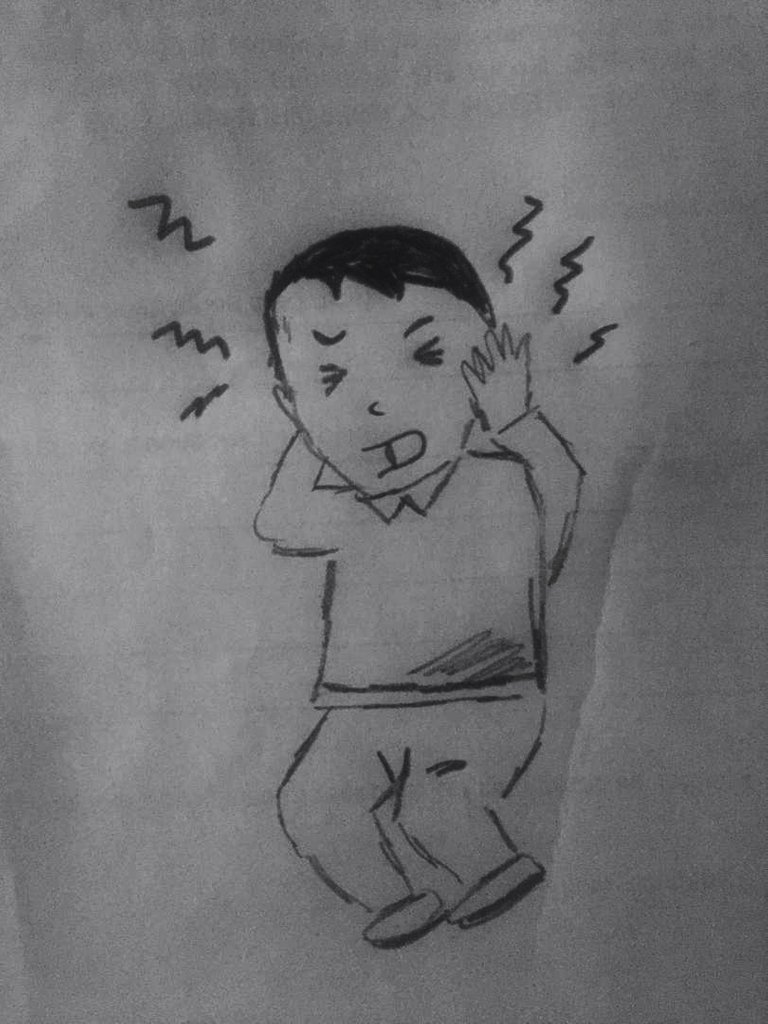Saludos amigos Hivers, un placer estar por acá de nuevo, vaya para ustedes mi mejores deseos, que se les traduzcan en salud, y buena energía.
Estos días han sido un poco movidos en nuestro servicio de medicina interna, pero no quiero perder la oportunidad de compartir con ustedes a través de la lectura y la escritura que tanto bien hace.
El día de hoy, escribiré un poco sobre Meningitis Bacteriana*

La meningitis bacteriana: Se define como la inflamación de las meninges (membranas que recubren tanto el cerebro como la médula espinal), está patología puede ser causada por diferentes tipos de bacterias (hongos o virus), y es una entidad que requiere absoluta atención por lo tanto debe ser tratada como una urgencia médica, ya que frecuente (sino es tratada a tiempo) conlleva a incapacidad o inclusive la muerte.
El mecanismo de la transmisión de esta enfermedad es la vía aérea, osea por medio de las secreciones como la saliva y el moco, lo que hace que la enfermedad sea de contagio fácil.
Es importante destacar que el cuanto a la meningitis bacteriana específicamente puede variar por grupos etarios, por ejemplo en los recién nacidos son frecuentes: estreptococo hemolítico tipo B y estreptococo neumoniae, por el lado de los niños: están los n
neumococos y bacilos de Pfeiffer, mientras que en adolescentes y adultos jóvenes está: La neisseria meningitidis.
Por último en los adultos es habitual la Listeria monocytogenes y el estreptococo del grupo B.

Síntomas:
Entre los síntomas comunes podemos encontrar: Fiebre repentina que oscila en 39 y 40 grados centígrados, escaalosfrios, dolor de cabeza de intensidad moderada-severa, y rigidez nucal como síntomas primarios, otras veces el paciente puede llegar a tener sensibilidad a la luz y otras manifiestan convulsiones, ansiedad, cansancio, anorexia y somnolencia.
Diagnóstico:
Tomando en cuenta la edad del paciente, es importante el interrogatorio y el examen fisico, así como antecedentes patológicos personales, si el paciente estuvo o frecuento un área de salud (hospitales por ejemplo) o su tuvo algún contacto con una persona que estuviese enferma de gripe, si el individuo está vacunado.
Una vez que se tiene sospecha de la enfermedad, es necesario una hematología completa, dónde sin duda habrá un aumento de leucocitos a expensas de neutrófilos (en caso de ser bacteriana), asimismo se recomienda una muestra de líquido cefalorraquídeo que ratificará el diagnóstico inicial.
De igual forma, se indicará una tomografía axial computarizada para conocer el alcance de la lesión ocasionada por la bacteria.
Tratamiento:
Esta entidad requiere sin duda un tratamiento bajo cuidado hospitalario, independientemente de la edad del paciente, en las condiciones en que se encuentre.
El tratamiento estará compuesto por antibióticos, antiinflamatorios y corticoesteroides. Asimismo en caso de convulsiones está indicado el uso de medicamentos para contrarrestar las mismas.
Es oportuno mencionar, que está y otras entidades se pueden evitar con la inmunización oportuna, además del uso correcto de las medidas higiénico-sanitarias correspondientes, lavado de manos, distanciamiento social y el uso adecuado del tapabocas que tan necesarias son en estos tiempos, no podemos olvidar que actualmente.

Gracias.
Dios siempre de Cabrestero.
PD: Fotos y Dibujos de mi propiedad.
English:
Greetings Hivers friends, a pleasure to be here again, my best wishes to you, may they translate into health and good energy.
These days have been a little busy in our internal medicine service, but I do not want to miss the opportunity to share with you through reading and writing that does so much good.
Today I will write a little about Bacterial Meningitis*.
Bacterial meningitis: It is defined as the inflammation of the meninges (membranes that cover both the brain and the spinal cord), this pathology can be caused by different types of bacteria (fungi or viruses), and is an entity that requires absolute attention and therefore should be treated as a medical emergency, since it often (if not treated in time) leads to disability or even death.
The mechanism of transmission of this disease is through the airway, i.e. through secretions such as saliva and mucus, which makes the disease easy to spread.
It is important to emphasize that bacterial meningitis specifically can vary by age groups, for example in newborns are frequent: hemolytic streptococcus type B and streptococcus pneumoniae, on the side of children: there are the pneumococci and bacillus pneumoniae.
pneumococci and Pfeiffer bacilli, while in adolescents and young adults there is: Neisseria meningitidis.
Finally in adults Listeria monocytogenes and group B streptococcus are common.
Symptoms:
Among the common symptoms we can find: Sudden fever ranging between 39 and 40 degrees Celsius, scalosphrias, headache of moderate-severe intensity, and nuchal rigidity as primary symptoms, other times the patient may become sensitive to light and others manifest convulsions, anxiety, fatigue, anorexia and drowsiness.
Diagnosis:
Taking into account the age of the patient, it is important the interrogation and physical examination, as well as personal pathological history, if the patient was or frequented a health area (hospitals for example) or had any contact with a person who was sick with influenza, if the individual is vaccinated.
Once the disease is suspected, a complete hematology is necessary, where there will undoubtedly be an increase of leukocytes at the expense of neutrophils (in case of bacterial), also a cerebrospinal fluid sample is recommended to confirm the initial diagnosis.
A CT scan will also be indicated to know the extent of the lesion caused by the bacteria.
Treatment:
This entity undoubtedly requires treatment under hospital care, regardless of the age of the patient, in the conditions in which he/she is.
The treatment will consist of antibiotics, anti-inflammatory drugs and corticosteroids. Likewise, in case of convulsions, the use of drugs to counteract them is indicated.
It is opportune to mention that this and other entities can be avoided with timely immunization, in addition to the correct use of the corresponding hygienic-sanitary measures, hand washing, social distancing and the adequate use of a face mask that are so necessary in these times, we cannot forget that nowadays.
Thank you.
God always of Cabrestero.
